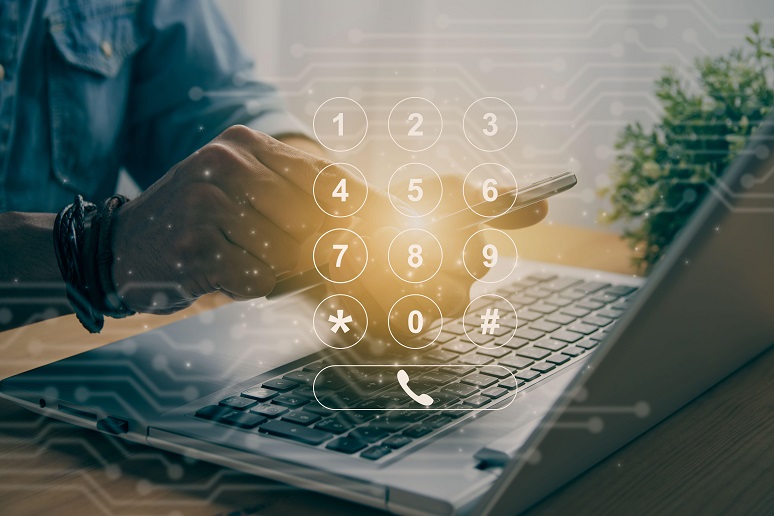If your organization is like most, you’re still paying a communications service provider for dial tone lines, typically delivered on copper cable. These are also called POTS lines (Plain Old Telephone Service) and have ten digits (area code + exchange + last four numbers). This type of line is being phased out. If you keep any of them, and your provider is willing to support them, the cost is about to go up, so now is a good time to determine whether you need these lines. If your service provider approaches you to migrate the lines to another type of service, it will help to know in advance how the lines are used.
Note: A dial tone line is different than a ‘Direct Inward Dial” (DID) number, which also has ten digits but is a software number only.
Gather Detail on How the Lines Are Used
There may be multiple types of services on each bill, but we're focusing on the dial tone lines for now (we’ll write about researching the purpose of other types of lines in a future article).
- First, get a recent copy of every fixed-line communications bill you receive monthly. Since different bills may go to different departments, it’s good to get a list from your accounts payable department of every communication account paid monthly.
- Next, get a detailed inventory of all services paid for under each separate bill. Ask each communications service provider to give you this inventory broken down to the smallest individual billable item. Keep in mind that communications service providers typically give marketing names to their services, so the same service from one company may have a different name than the exact same service from another.
- Note what you are paying monthly for each line (it may vary) so that if you do not need it, you will be able to track your savings.
- Even a single dial tone line can have multiple billing components, so be sure to take each of them into account. For example a directory listing charge (or non-published charge) or a separate charge for touchtone. Account for taxes and surcharges, which can add 20% or more to each line's billing sum. Within your organization, there may also be more than one person needed to identify the purpose of various lines. Be sure to include anyone responsible for keeping your business telephone system up and running.
- Once you receive the details, if it’s not clear, ask for a call with someone who can explain it. This will typically be your carrier's billing specialist rather than your account executive—although it is a good idea to keep your entire account team involved.
Do Your Research
You'll likely have some lines where it's not immediately apparent why they're still operational or who's using them. The dial tones lines may be separate telephone numbers used by different individuals, or the dial tone lines were used in special promotions or ad campaigns. They may also be part of the facility's infrastructure and linked to an alarm system, an elevator's call line, a fax line, and a dedicated modem. You'll need to do some detective work.
Here is a recommended step-by-step process for identifying the business purpose of your dial tone lines:
- First, see if anyone in your organization has been keeping records. Even if records have not been kept up-to-date, they can be a helpful resource indicating the original purpose of the line.
- Request the service address from the provider. This is often different from the billing address and will let you know where the line is physically located.
- Call the number. If someone answers, identify yourself and ask who it is and where they are located within the organization (address, floor, room, department). You can also ask if they know what the line is used for. Just because someone answers does not necessarily mean the line is needed.
- If you call the number and reach an announcement that says the line is “not in service,” this is a pretty good indicator that you are paying for a service that is not working.
- If you call the number and reach a “fast busy signal,” this is also an indication that the line is not working.
- If you call the number and it rings, but no one answers, make a note of this– you'll need to do more research.
- If you call the number and hear a high-pitched tone, you may be reaching a fax or modem.
- Another approach is to ask the service provider to let you know if the line is in use. This can be an indicator of whether a line is needed. Ask for usage for both outgoing and incoming calls.
- As mentioned above, alarms for fire and other purposes often use a dial tone line, so you may be able to get the numbers from your alarm company.
- Sometimes toll-free numbers (like 800 numbers) forward to a dial tone line. You can ask the toll-free provider to identify the dial tone line number to which the toll-free number is forwarded.
- There is also call forwarding from one dial tone line to another, in which case your service provider should be able to tell you both which lines are forwarded and the telephone numbers they’re forwarded to.
Keep track of the result of calling/researching each line. If the use of the line cannot be determined, you can likely disconnect it.
As a Last Resort
If you have tried all the research approaches and still cannot identify the business purpose of a line, ask your service provider to suspend it temporarily to see if anyone complains. This approach isn’t foolproof, and typically there is a cost to do so. We outline the process and the considerations in
this related article.
The other alternative is to disconnect the numbers completely, keeping in mind that once a number is disconnected, it may be impossible to have it reinstated. Yet another thing to try is sometimes referred to as a “tone and tag.” The company that provides the dial tone lines will charge for a technician to come to your premises to identify where the line is located on demarc (point of demarcation), usually in a telephone closet, and will tag it (or label it in some way). Once the line is located and identified, an in-house or independent technician can try to tell if the line is connected to anything at the other end of an in-house cable (e.g., a phone, fax, an alarm, etc.) Since this is labor intensive and costly process—it's not often pursued.
Rates on dial tone lines vary. Historically, each costing an average of $30 monthly/$360 annually. It is not unusual for a large organization to have 100 or more dial tone lines—so potential savings can be substantial. As mentioned, the cost for this type of line is going to be increasing, and there are instances where the new cost is $100 monthly or more. Start by disconnecting the lines that it is clear you do not need. With lines you have identified as needed and in use, update your records so that you will hold onto the purpose of the line. For the remaining lines on your list, try one of our last-resort suggestions above. Once you have placed the disconnect orders, follow up to be sure the billing stops.
One last comment, the carriers are in the process of abandoning support for the copper cables on which dial tone lines are typically delivered. You will likely hear from them at some point, offering to migrate the lines from copper cable to fiber cable, potentially with a different cost structure. This makes another case for determining whether you need your dial tone lines in advance of being approached by your carrier since they may not give you much time to research the purpose of each line.
Enjoy incredible speakers, insightful educational sessions, and plenty of networking opportunities for consultants at the SCTC annual conference, Oct. 23-26 in Dallas, TX. The conference is open to everyone.











